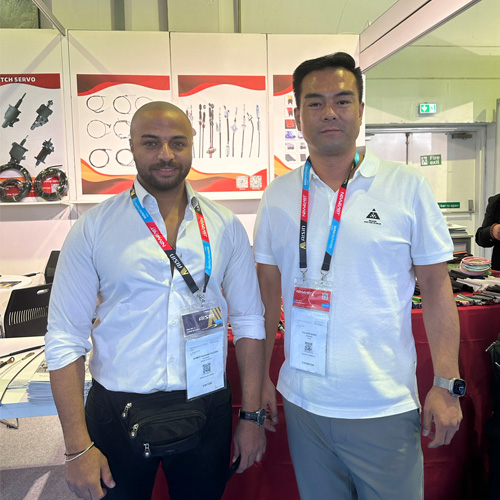push pull throttle assembly
Understanding the Push-Pull Throttle Assembly A Crucial Component in Modern Machinery
The push-pull throttle assembly is an integral component used in various machinery and vehicles, including motorcycles, boats, and even certain types of industrial equipment. This assembly controls the engine's power output by regulating the air-fuel mixture that enters the engine, thereby directly influencing the vehicle's speed and acceleration. Understanding the principles and functions of a push-pull throttle assembly is essential for both operators and maintenance personnel as it impacts performance and safety.
Components of a Push-Pull Throttle Assembly
At its core, a push-pull throttle assembly consists of several key components the throttle cable, the throttle grip or pedal, the throttle body, and sometimes additional linkage mechanisms for fine-tuning.
1. Throttle Cable This is a flexible wire that connects the throttle grip (or pedal) to the throttle body. The cable transmits motion when the operator adjusts the throttle, either by twisting a grip or pressing a pedal.
2. Throttle Grip/Pedal Depending on the application, the throttle control can be in the form of a grip on a motorcycle or a pedal in cars. The design is intuitive, allowing operators to easily increase or decrease engine power with minimal effort.
3. Throttle Body It comprises a valve mechanism that regulates airflow into the engine. When the throttle grip or pedal is activated, the valve opens or closes, allowing varying amounts of air into the engine's combustion chamber. This adjustment is crucial for the air-fuel ratio, which impacts efficiency and emissions.
4. Linkage Mechanisms In some assemblies, there are additional levers and linkages that enhance the throttle's responsiveness. These components can improve the feedback feel for the operator, making it easier to control the machine at various speeds.
Functionality of the Push-Pull Mechanism
The push-pull mechanism refers to the dual action of the throttle cable. When you push or pull the throttle control, the cable moves in response, either opening or closing the throttle body valve. This design is not only efficient but also provides a level of redundancy; if one direction of the cable fails, the system can often still operate in the opposite direction.
The push-pull system is particularly advantageous in applications where precision is key, such as in aviation or high-performance motorsports. The system allows for finely-tuned adjustments, leading to better handling and performance.
push pull throttle assembly

Applications of the Push-Pull Throttle Assembly
The versatility of push-pull throttle assemblies makes them suitable for a broad range of applications
- Motorcycles In motorcycles, the throttle assembly allows riders to control their speed and acceleration effectively. A sensitive throttle response enhances the riding experience and performance, especially in competitive settings.
- Marine Vehicles In boats, the push-pull throttle assembly helps manage engine output, crucial for maneuverability and speed control on water.
- Industrial Equipment In forklifts and other heavy machinery, the throttle assembly aids in controlling the engine power necessary for lifting and transporting heavy loads.
- Aerospace In aircraft, throttle assemblies play a vital role in managing the thrust of the engines, contributing to safe takeoffs and landings.
Maintenance and Troubleshooting
Regular maintenance of the push-pull throttle assembly is vital for ensuring reliable operation. Operators should routinely inspect the throttle cable for signs of wear or fraying, which may impede performance or lead to failure. Lubricating the throttle body and ensuring it opens and closes smoothly is also crucial.
Common issues that may arise include throttle sticking, erratic engine response, or excessive resistance in the throttle control. These problems often stem from a frayed cable, a lack of lubrication, or misalignment within the throttle body assembly. Prompt diagnosis and repair are necessary to prevent serious safety hazards or mechanical issues.
Conclusion
The push-pull throttle assembly is a significant component of many vehicles and machines, providing precise control over engine power output. Understanding its design, function, and maintenance requirements is essential for both operators and technicians. With proper care and attention, the push-pull throttle assembly can ensure efficient performance and contribute to a safe operating environment, underscoring its importance in modern engineering.
-
Upgrade Your Vehicle with High-Quality Handbrake CablesNewsNov.01,2024
-
Optimize Your Bike's Performance with Quality CablesNewsNov.01,2024
-
Enhance Your Vehicle's Performance with Quality Clutch ComponentsNewsNov.01,2024
-
Elevate Your Vehicle's Performance with Quality Throttle CablesNewsNov.01,2024
-
Elevate Your Vehicle's Performance with Quality CablesNewsNov.01,2024
-
Affordable Solutions for Your Cable NeedsNewsNov.01,2024
